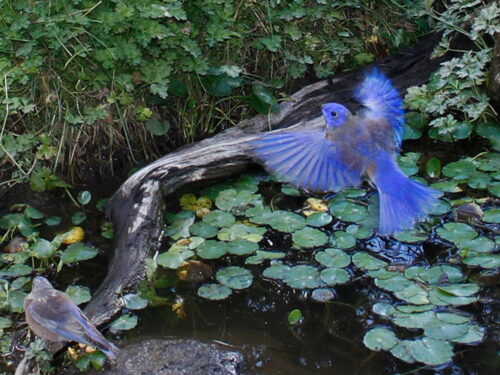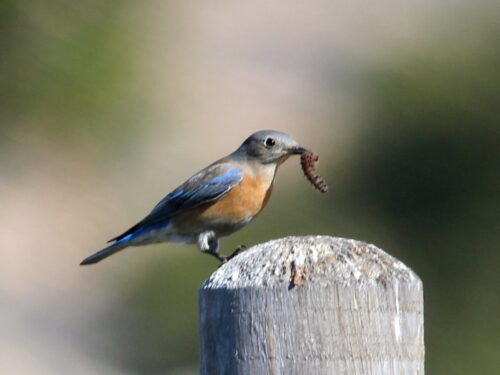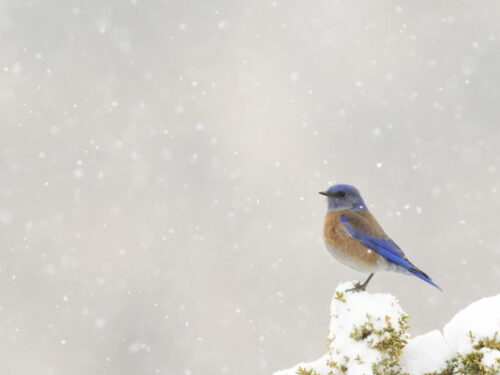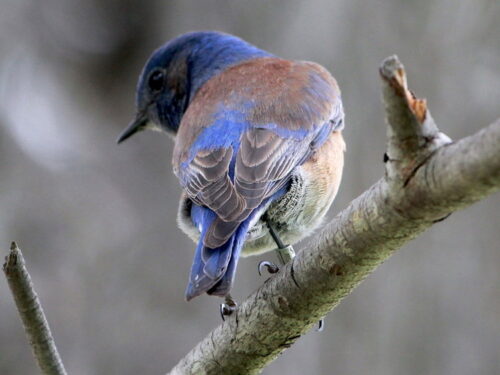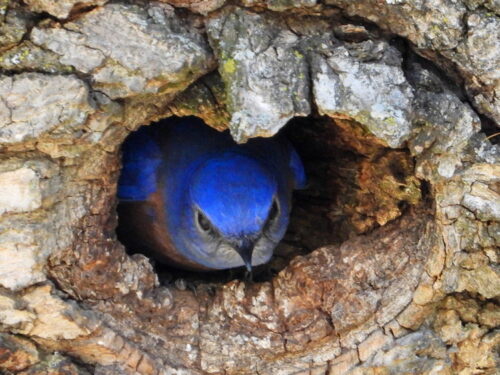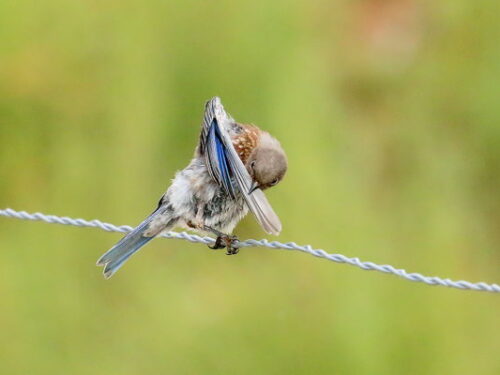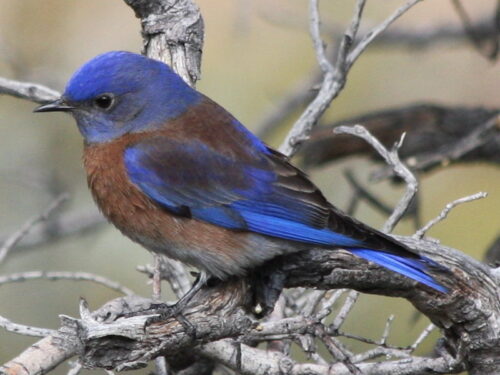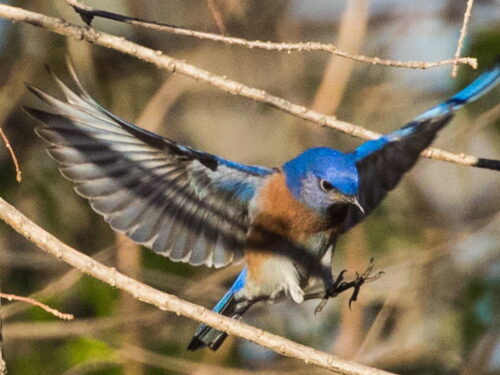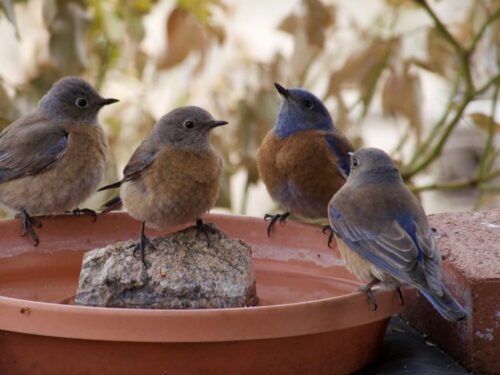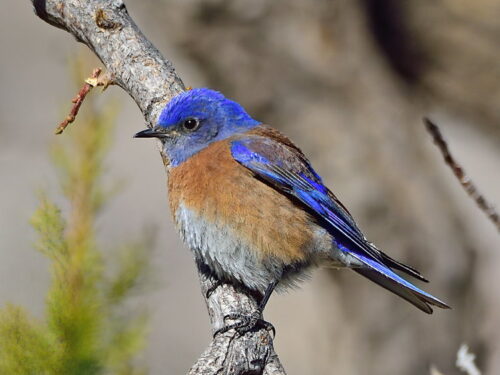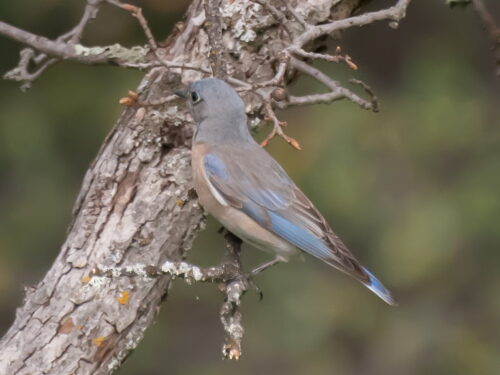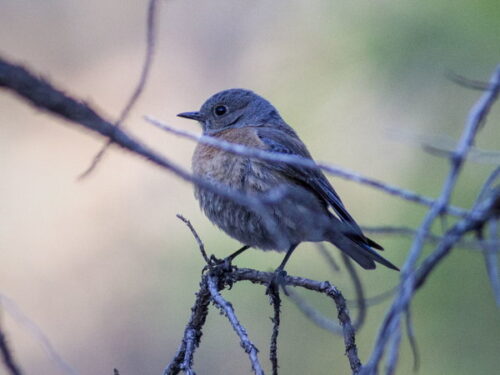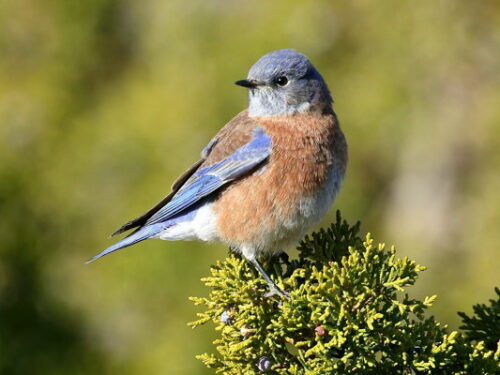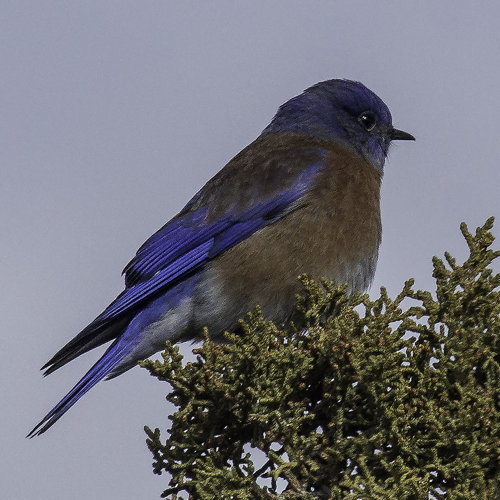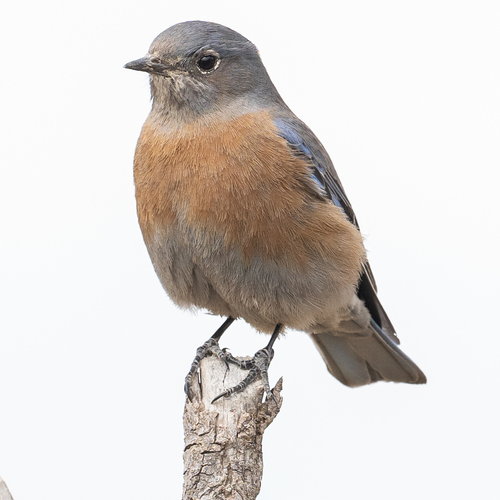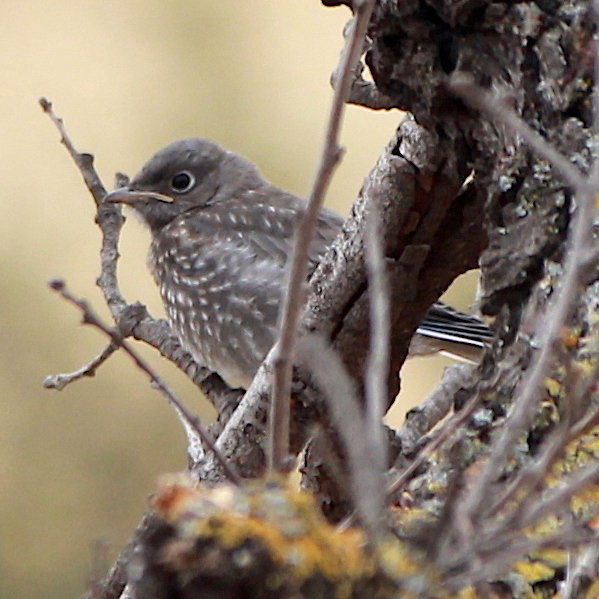Western Bluebird
Scientific Name: Sialia mexicana
Type: Bird
Family: Turdidae (Thrushes)
Size: 6.5 to 7.5 inches long; 13.5 inch wingspan
Weight: up to an ounce
Life Span: up to 5 years
Physical Description
Western bluebirds are small thrushes that can easily be distinguished from the mountain bluebird which is the other bluebird in the area. There is orange coloring present on the western that is lacking in the mountain.
Male western bluebirds have a deep blue head and upperparts, rusty-brown to orange breast and sides, and gray belly with black bill, legs and feet. Females have dull blue bodies along with wings and tails with a muted orange breast. Immature birds are duller than the female with spots on their chest and back.
Range, Migration, and Habitat
The western bluebird has a wide breeding range from British Columbia in the north, to Baja in the south, and as far east as New Mexico. It is found year-round throughout most of this breeding range. However, the northernmost populations will migrate southward the colder months.
These birds prefer open woodlands, coniferous forests, and pastures where old trees provide nest sites. In the colder months they can be found more often in semi-open habitats such as pinyon-juniper and desert.
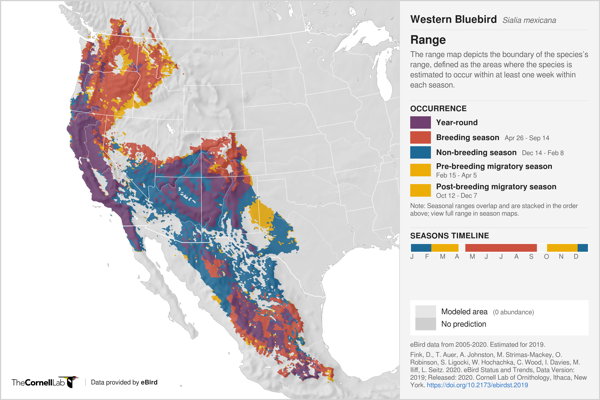
Diet
Western bluebirds primarily eat insects (grasshoppers, caterpillars, beetles, and ants) or worms, especially in the summer. In the winter, berries like mistletoe, juniper, and elderberry feature heavily in their diet.
These bluebirds forage for food both on the ground as well as in the air. They can capture insects mid-flight. They will also perch in trees and bushes to pick insects off of foliage or to take berries.
Behavior and Social Life
During the summer breeding season, western bluebirds can often be seen perching on fence wires and utility lines by open meadows. They will drink at streams and come to bird baths for water. However, they are social and usually feed in small flocks during the non-breeding season. During this time, they can be heard flying overhead and seen feeding on berries in trees, particularly in pinyon-juniper wooded areas.
Western bluebirds use a variety of calls to communicate. There are several different calls that are used to determine the location of mates as well as to establish territorial boundaries. They make mellow “few” and “che-check” calls to determine location between mates during the breeding season. Their defense call is a kind of “squawk” that indicates an intruder is near.
Birds living in the area at high elevations move to lower ones during the winter and return in spring. During winter, western bluebirds usually live in small kin groups of related birds for protection from predators. This also facilitates finding mates and helpers for raising the young.
Life Cycle
Males are very territorial during the breeding season. Male and female western bluebirds form long-term mating bonds, though they are not always faithful. Males sing and flutter in front of their chosen female with his wings partially open and tail fanned. The breeding season is from May to July. Paired males and females will search for a suitable nesting site together.
Western bluebirds are cavity nesters. However, their bill is not designed to dig so they use woodpecker holes or old cavities in dead trees. In addition, they are readily attracted to nesting boxes. The female builds the nest, sometimes with help from the male, out of grasses, straw, pine needles, and moss. After lining the nest with soft materials, she will lay 4 to 6 eggs.
The male feeds the female while she incubates the eggs. The eggs hatch about 12 to 18 days later. The female broods the young, while the male continues with the feeding duties. The chicks fledge at around 2 to 3 weeks of age and reach maturity at a year old. Western bluebirds typically have 1 or 2 clutches per season.
Granary
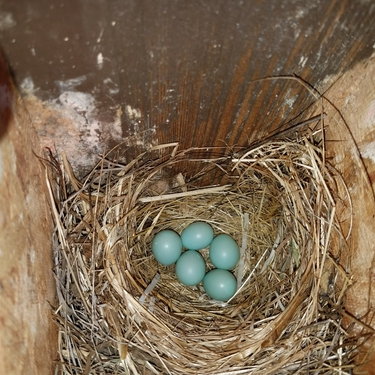
Close-up of Granary
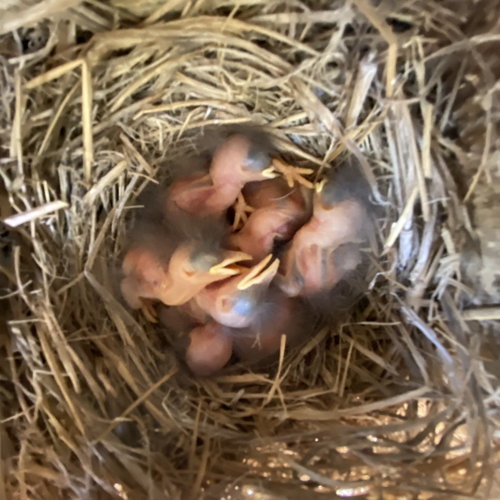
Nest Building
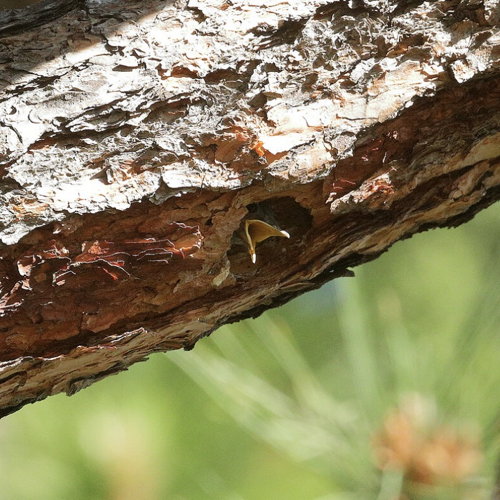
Food
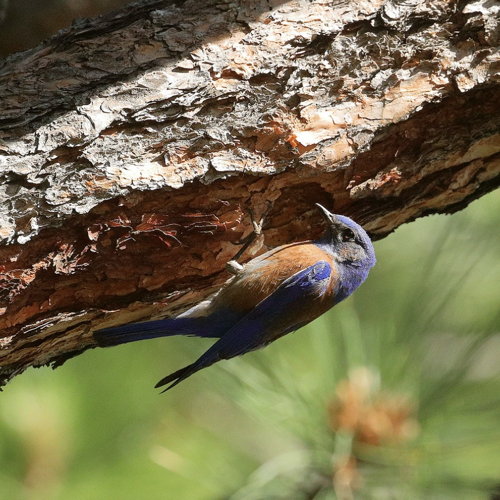
Title
Ecological Role
Western bluebirds, as insectivores, greatly help control the insect populations in their range However, their chicks can fall prey to chipmunks and squirrels which may attack the young birds, if left unguarded, and take over the nest to live in.
Western bluebirds compete with other birds such as swallows, wrens, woodpeckers, and flycatchers for both food and nest space, sometimes leading to disputes between them in areas with limited resources.
Interactions With Humans
These are beautiful birds that people want to attract. Placing nest boxes is a common and effective means to bring bluebirds closer.
Interesting Facts
- European starlings, house sparrows, and tree sparrows compete with western bluebirds for nesting sites and may attack and take over a nest.
- Though paired, western bluebirds often stray as genetic studies have shown that 45% of nests carried young that are not offspring of the defending male.
- It only takes about 15 to 25 calories a day to keep these small birds well nourished.
- The total western bluebird breeding population is 6.7 million with 67% of the birds in the U.S., 52% in Mexico, and 1% breeding in Canada.
- Western bluebirds exhibit cooperative breeding, meaning that they have helpers at the nest, typically juveniles from a previous brood.
- Violet-green swallows have been observed helping western bluebirds to defend their nests from predators.
- Fights between male western bluebirds can be fierce with one bird tumbling the opponent to the ground and jabbing at him with his beak.
- Western bluebirds have made a come back from loss of habitat and nest cavities due to thousands of bluebird nest boxes being installed across the country.

